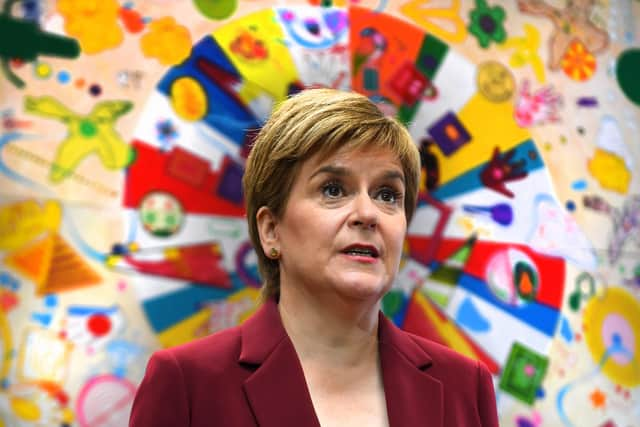Business takes a new interest in independence


Indeed, as indyref2 has risen again up the news agenda, so too has business interest in the issue. This may in part be due to other external phenomena which have dominated risk/opportunity registers in recent years beginning to recede or transition into delivery/business as usual mode.
Brexit may have a long tail, but impacts differ greatly according to sector. The coronavirus pandemic is far from over, but businesses are now used to operating in a perpetual state of adaptation. Climate will demand a sustained and Herculean effort, but this is something business is now getting its head around and beginning to operationalise. All of which leaves constitutional politics with more breathing space, high on the list of “known unknowns”.
Advertisement
Hide AdAdvertisement
Hide AdAttention given to indyref2 generally tends to obsess on the slow, pained dance between Yes and No camps, embodied in the Scottish and UK governments respectively, over the timing and mechanic of a second vote. Will a second referendum take place? If so, how will legal legitimacy be conferred, and when?


Such fixation with the mechanic of a vote - the “how” - has served to stifle consideration of what independence V2.0 might actually look like, and how it may serve or impact Scottish business - the “what”.
Ten months before the 2014 referendum, the Scottish electorate was presented with “Scotland’s Future”, a weighty 670 page prospectus, outlining how an independent Scotland would form, take shape and operate.
Much has happened over the seven intervening years though, and if we can be certain of anything, it must be that the pitch to voters, when and if a second vote is held, will have evolved across a range of areas, accommodating as it must major economic and social changes arising from the trinity of Brexit, pandemic and climate crisis.
In the absence of an updated prospectus at this stage, businesses seeking to gauge the opportunities and risks which independence may pose to their interests, must for now play “join the dots”, using a number of sources.
The 2014 prospectus, and a number of subsequent interventions - most notably 2018’s Sustainable Growth Commission report and successive SNP election manifestos - offer some indication of the direction of travel.
These should be considered alongside Citizens’ Assemblies, a swathe of public statements from prominent figures in Government and the Yes movement and, most recently, the SNP’s cooperation agreement with the Scottish Green Party. Together, these offer an insight into where the movement may be going on business-critical matters such as currency, employment, immigration, and future EU membership.
A second vote is by no means assured in the near term. However, now that a desired timescale for indyref2 has been confirmed by the First Minister (by the end of 2023), businesses will welcome further detail on the updated prospectus and the opportunity to unpack, assess and engage on the detail well in advance of any vote.
Andrew Henderson, Director of Public Policy at Pinsent Masons
Comments
Want to join the conversation? Please or to comment on this article.